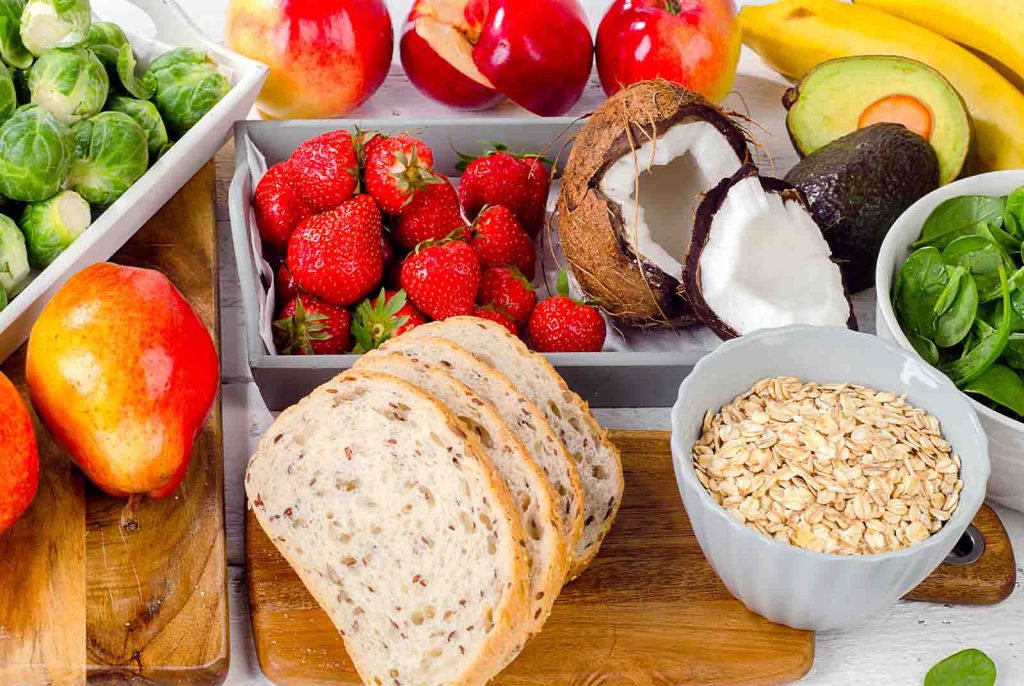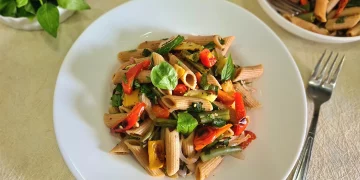Introduction
For many people striving to eat healthier, increasing dietary fiber is a common recommendation. Whole grains, legumes, leafy greens, and fresh fruits are often added to meals in an effort to support digestion, improve heart health, and manage weight. But for some, this well-intentioned change leads to an unexpected and uncomfortable side effect: persistent bloating.
Feeling bloated despite eating “clean” or “healthy” can be confusing and frustrating. Many begin to question whether their bodies are simply not suited to plant-based foods or whether something is wrong with their gut. In many cases, the real issue lies in how fiber is introduced and processed—not in fiber itself.
Understanding how a high-fiber diet works, and how it interacts with your digestive system, is essential for reaping its benefits without the discomfort.
What Fiber Really Is
Fiber is a type of carbohydrate that the body cannot fully digest. It passes through the digestive tract largely intact, providing bulk to stool and feeding beneficial gut bacteria. There are two main types:
- Soluble fiber, which dissolves in water and forms a gel-like substance. It helps regulate blood sugar and cholesterol.
- Insoluble fiber, which does not dissolve in water and adds bulk to the stool, promoting bowel regularity.
Both types are important. However, the way fiber affects your digestion depends on the amount, type, and source—and how your body is currently adapted to processing it.
Why High-Fiber Diets Can Cause Bloating
When people suddenly increase fiber intake, especially from raw vegetables, legumes, or bran-rich grains, the digestive system may struggle to keep up. Fiber, particularly soluble fiber, is fermented by gut bacteria in the colon. This fermentation produces gases such as hydrogen, methane, and carbon dioxide.
If your gut microbiota is not yet adapted to a high-fiber diet, this gas production can lead to uncomfortable bloating, cramping, and even flatulence. For some, it may also result in irregular bowel movements.
This does not mean that fiber is harmful. It simply means the digestive system needs time—and the right conditions—to adjust.
Common Missteps in High-Fiber Eating
- Increasing fiber too quickly
A sudden jump in fiber intake can overwhelm the digestive system. It’s best to increase fiber slowly over several days or weeks, allowing your gut to adapt. - Not drinking enough water
Fiber, especially soluble fiber, needs water to move smoothly through the digestive tract. Without enough fluids, fiber can slow digestion and cause bloating or constipation. - Relying on processed fiber additives
Some “high-fiber” packaged foods use isolated fibers like inulin, chicory root, or synthetic additives. These can be harder to tolerate than whole food sources and often lead to gas and discomfort. - Ignoring individual tolerance
Some people are more sensitive to certain fiber-rich foods, especially legumes, cruciferous vegetables (like broccoli or cabbage), or whole grains. This sensitivity may relate to FODMAP content, fermentation rates, or other digestive issues.
The FODMAP Connection
Many high-fiber foods are also high in FODMAPs (fermentable oligosaccharides, disaccharides, monosaccharides, and polyols). These are short-chain carbohydrates that are poorly absorbed in the small intestine and rapidly fermented in the colon.
For individuals with irritable bowel syndrome (IBS) or sensitive guts, FODMAPs can trigger bloating, gas, and discomfort—even when the foods themselves are healthy.
Examples of healthy high-fiber, high-FODMAP foods include:
- Lentils and chickpeas
- Onions and garlic
- Apples and pears
- Cauliflower and Brussels sprouts
- Wheat and rye
Identifying and moderating FODMAP intake can help minimize symptoms without abandoning fiber altogether.

How to Eat a High-Fiber Diet Without the Bloat
- Start slow
Gradually add fiber-rich foods to your diet over one to two weeks. Start with cooked vegetables, peeled fruits, and easy-to-digest grains like oats or rice. - Cook your fiber
Cooking vegetables and legumes softens their fibers and reduces their fermentation potential, making them easier on the gut. - Chew thoroughly
Proper chewing helps break down fibers before they reach the gut, easing the digestive workload. - Stay hydrated
Drink plenty of water throughout the day, especially if you’re increasing your fiber intake. - Balance soluble and insoluble fiber
A mix of both types of fiber supports smoother digestion. Soluble fiber is found in oats, chia seeds, bananas, and beans. Insoluble fiber is found in wheat bran, whole grains, and leafy greens. - Identify personal triggers
Keep a food and symptom journal to track which fiber sources cause discomfort. This can help tailor your fiber intake to your individual needs. - Support gut health
Probiotics and fermented foods like yogurt, kefir, or sauerkraut can support gut bacteria balance, improving fiber tolerance over time.
When to Seek Professional Help
Persistent bloating, even on a balanced diet, may indicate a deeper issue such as small intestinal bacterial overgrowth (SIBO), food intolerances, or an imbalance in gut flora. If dietary adjustments do not bring relief, it may be wise to consult with a healthcare provider or registered dietitian. Functional testing and a guided elimination approach may help clarify underlying causes.
Conclusion
A high-fiber diet offers numerous health benefits, but more fiber isn’t always better—especially if it’s introduced too quickly or without attention to digestion. Bloating is not necessarily a sign of poor health, but rather a signal that the digestive system is adapting or struggling.
Understanding how fiber interacts with your gut and taking simple steps to support digestion can help you enjoy a high-fiber lifestyle comfortably. Eating healthy should not come at the cost of constant discomfort. With the right approach, fiber can become your ally—not your enemy.

















































